-
Prologue
-
Market Introduction
-
Definition 20
-
Scope
-
Of The Study 20
-
Market Structure 20
-
Market Insights
-
Research Methodology
-
Research Process 24
-
Primary Research 25
-
Secondary Research 26
-
Market Size Estimation 26
-
Forecast
-
Model 27
-
List Of Assumptions 28
-
Market Dynamics
-
Market Dynamics
-
Introduction 29
-
Drivers 30
- Use Of Ethylene Carbonate
- Growing Adoption Of Ethylene
-
As An Electrolyte In Lithium-Ion Batteries 30
-
Carbonate In The Gas Separation Process In The Oil & Gas Industry 31
-
Increasing Demand For Ethylene Carbonate In The Production Of Vinylene Carbonate
-
And Surface Coatings 33
-
Restraints 34
- Volatile Raw Material
-
Prices 34
-
Opportunity 35
- Introduction Of Lithium-Sulfur Batteries
-
Trend 36
- Growing Adoption Of Ethylene Carbonate-Modified
-
Dispersants As Additives In Engine Oil 36
-
Challenge 36
- Extensive
-
Research On New Battery Technologies 36
-
Market Factor Analysis
-
Supply
- Raw Materials 38
- Ethylene Carbonate Producers
- Distribution Channel 39
- End-Use Industries 39
- Threat Of New Entrants 40
- Threat Of Substitutes 41
- Bargaining Power
- Bargaining Power Of Buyers 41
-
Chain Analysis 38
-
Porter’s Five Forces Analysis 40
-
Threat Of Rivalry 40
-
Of Suppliers 41
-
Pricing Analysis
-
(2016–2018) 41
-
Global Ethylene Carbonate Market, By Form
-
Introduction
-
Solid 44
-
Liquid 45
-
Global Ethylene Carbonate Market,
-
By Application
-
Introduction 47
-
Lithium Battery Electrolytes 49
-
Lubricants 50
-
Plasticizers 51
-
Surface Coatings 52
-
Chemical Intermediates 53
-
Fiber Processing Agents 54
-
Dyes 55
-
Others 56
-
Global Ethylene Carbonate Market, By End-Use Industry
-
Introduction 58
-
Automotive 60
-
Oil & Gas 61
-
Textile 63
-
Chemical 64
-
Medical 65
-
Personal Care &
-
Hygiene 66
-
Agriculture 67
-
Others 68
-
Global Ethylene Carbonate
-
Market, By Region
-
Introduction 69
-
North America 74
- Canada 80
-
US 77
-
Europe 83
- Germany 87
- UK 92
- Italy 95
- Russia 98
- The Netherlands 103
- Belgium 106
- Poland
- Rest Of Europe 111
-
France 89
-
Spain 100
-
Asia-Pacific 115
- China
- Japan 121
- India 124
- South Korea 127
- Malaysia 132
- Indonesia 135
- Rest Of Asia-Pacific 138
-
Australia And New Zealand 129
-
Latin America 141
- Mexico
- Brazil 147
- Argentina 150
- Rest Of Latin America
-
Middle East & Africa 156
- Turkey 159
- UAE
- Saudi Arabia 165
- Israel 168
- Egypt 170
- Rest Of MIDDLE EAST & AFRICA 173
-
Competitive Landscape
-
Introduction 177
-
Market Strategy Analysis 177
-
Company Profiles
-
BASF SE_x005F_x000B_ 178
- Company Overview 178
- Financial
- Products Offered 179
- Key Developments 179
- SWOT Analysis 179
- Key Strategies 179
-
Overview 178
-
Huntsman International
- Company Overview 180
- Financial Overview
- Products Offered 180
- Key Developments 181
- Key Strategies 181
-
LLC_x005F_x000B_ 180
-
SWOT Analysis 181
-
Mitsubishi Chemical Corporation_x005F_x000B_
- Company Overview 182
- Financial Overview 182
- Key Developments 183
- SWOT Analysis
- Key Strategies 183
-
Products Offered 183
-
OUCC_x005F_x000B_ 184
- Company
- Financial Overview 184
- Products Offered 185
- Key Developments 185
- SWOT Analysis 185
- Key Strategies
-
Overview 184
-
Merck KGaA_x005F_x000B_ 186
- Company Overview 186
- Products Offered 187
- Key Developments
- SWOT Analysis 187
- Key Strategies 187
-
Financial Overview 186
-
New Japan
- Company Overview 188
- Products Offered 189
- Key Developments
- SWOT Analysis 189
- Key Strategies 189
-
Chemical Co., Ltd_x005F_x000B_ 188
-
Financial Overview 188
-
TOAGOSEI
- Company Overview 190
- Financial
- Products Offered 190
- Key Developments 191
- SWOT Analysis 191
- Key Strategies 191
-
CO., LTD._x005F_x000B_ 190
-
Overview 190
-
Shandong Senjie
- Company Overview 192
- Products Offered 192
- Key Developments
- SWOT Analysis 192
- Key Strategies 192
-
Cleantech Co., Ltd. _x005F_x000B_ 192
-
Financial Overview 192
-
PANAX
- Company Overview 193
- Products Offered 193
- Key Developments
- SWOT Analysis 193
- Key Strategies 193
-
ETEC_x005F_x000B__x005F_x000B_ 193
-
Financial Overview 193
-
Zibo
- Company Overview 194
- Financial
- Products Offered 194
- Key Developments 194
- SWOT Analysis 194
- Key Strategies 194
-
Donghai Industries Co., Ltd 194
-
Overview 194
-
Tokyo Chemical
- Company Overview 195
- Financial Overview 195
- Products Offered 195
- SWOT Analysis 195
- Key Strategies
-
Industry Co., Ltd _x005F_x000B__x005F_x000B_ 195
-
Key Developments 195
-
Conclusion
-
Key Findings 196
-
Industry Trends 196
-
List Of Tables
-
MARKET SYNOPSIS 19
-
LIST OF ASSUMPTIONS
-
GLOBAL ETHYLENE CARBONATE MARKET PRICING (USD/TON) (2025-2034) 42
-
GLOBAL ETHYLENE CARBONATE MARKET, BY FORM, 2025-2034 (USD THOUSAND) 43
-
GLOBAL ETHYLENE CARBONATE MARKET, BY FORM, 2025-2034 (TONS) 44
-
TABLE
-
SOLID: GLOBAL ETHYLENE CARBONATE MARKET, BY REGION, 2025-2034 (USD THOUSAND) 45
-
SOLID: GLOBAL ETHYLENE CARBONATE MARKET, BY REGION, 2025-2034 (TONS) 45
-
LIQUID: GLOBAL ETHYLENE CARBONATE MARKET, BY REGION, 2025-2034 (USD THOUSAND)
-
LIQUID: GLOBAL ETHYLENE CARBONATE MARKET, BY REGION, 2025-2034 (TONS)
-
GLOBAL ETHYLENE CARBONATE MARKET, BY APPLICATION, 2025-2034 (USD
-
THOUSAND) 48
-
GLOBAL ETHYLENE CARBONATE MARKET, BY APPLICATION, 2025-2034
-
(TONS) 49
-
LITHIUM BATTERY ELECTROLYTES: GLOBAL ETHYLENE CARBONATE
-
MARKET, BY REGION, 2025-2034 (USD THOUSAND) 49
-
LITHIUM BATTERY ELECTROLYTES:
-
GLOBAL ETHYLENE CARBONATE MARKET, BY REGION, 2025-2034 (TONS) 50
-
LUBRICANTS:
-
GLOBAL ETHYLENE CARBONATE MARKET, BY REGION, 2025-2034 (USD THOUSAND) 50
-
TABLE
-
LUBRICANTS: GLOBAL ETHYLENE CARBONATE MARKET, BY REGION, 2025-2034 (TONS) 51
-
PLASTICIZERS: GLOBAL ETHYLENE CARBONATE MARKET, BY REGION, 2025-2034
-
(USD THOUSAND) 51
-
PLASTICIZERS: GLOBAL ETHYLENE CARBONATE MARKET,
-
BY REGION, 2025-2034 (TONS) 52
-
SURFACE COATINGS: GLOBAL ETHYLENE CARBONATE
-
MARKET, BY REGION, 2025-2034 (USD THOUSAND) 52
-
SURFACE COATINGS: GLOBAL
-
ETHYLENE CARBONATE MARKET, BY REGION, 2025-2034 (TONS) 53
-
CHEMICAL
-
INTERMEDIATES: GLOBAL ETHYLENE CARBONATE MARKET, BY REGION, 2025-2034 (USD THOUSAND)
-
CHEMICAL INTERMEDIATES: GLOBAL ETHYLENE CARBONATE MARKET, BY REGION,
-
FIBER PROCESSING AGENTS: GLOBAL ETHYLENE CARBONATE
-
MARKET, BY REGION, 2025-2034 (USD THOUSAND) 54
-
FIBER PROCESSING AGENTS:
-
GLOBAL ETHYLENE CARBONATE MARKET, BY REGION, 2025-2034 (TONS) 55
-
DYES:
-
GLOBAL ETHYLENE CARBONATE MARKET, BY REGION, 2025-2034 (USD THOUSAND) 55
-
TABLE
-
DYES: GLOBAL ETHYLENE CARBONATE MARKET, BY REGION, 2025-2034 (TONS) 56
-
TABLE
-
OTHERS: GLOBAL ETHYLENE CARBONATE MARKET, BY REGION, 2025-2034 (USD THOUSAND)
-
OTHERS: GLOBAL ETHYLENE CARBONATE MARKET, BY REGION, 2025-2034
-
(TONS) 57
-
GLOBAL ETHYLENE CARBONATE MARKET, BY END-USE INDUSTRY, 2025-2034
-
(USD THOUSAND) 59
-
GLOBAL ETHYLENE CARBONATE MARKET, BY END-USE INDUSTRY,
-
AUTOMOTIVE: GLOBAL ETHYLENE CARBONATE MARKET,
-
BY REGION, 2025-2034 (USD THOUSAND) 61
-
AUTOMOTIVE: GLOBAL ETHYLENE
-
CARBONATE MARKET, BY REGION, 2025-2034 (TONS) 61
-
OIL & GAS: GLOBAL
-
ETHYLENE CARBONATE MARKET, BY REGION, 2025-2034 (USD THOUSAND) 62
-
TABLE 33
-
OIL & GAS: GLOBAL ETHYLENE CARBONATE MARKET, BY REGION, 2025-2034 (TONS) 62
-
TEXTILE: GLOBAL ETHYLENE CARBONATE MARKET, BY REGION, 2025-2034 (USD
-
THOUSAND) 63
-
TEXTILE: GLOBAL ETHYLENE CARBONATE MARKET, BY REGION,
-
CHEMICAL: GLOBAL ETHYLENE CARBONATE MARKET, BY
-
REGION, 2025-2034 (USD THOUSAND) 64
-
CHEMICAL: GLOBAL ETHYLENE CARBONATE
-
MARKET, BY REGION, 2025-2034 (TONS) 64
-
MEDICAL: GLOBAL ETHYLENE CARBONATE
-
MARKET, BY REGION, 2025-2034 (USD THOUSAND) 65
-
MEDICAL: GLOBAL ETHYLENE
-
CARBONATE MARKET, BY REGION, 2025-2034 (TONS) 65
-
PERSONAL CARE &
-
HYGIENE: GLOBAL ETHYLENE CARBONATE MARKET, BY REGION, 2025-2034 (USD THOUSAND) 66
-
PERSONAL CARE & HYGIENE: GLOBAL ETHYLENE CARBONATE MARKET, BY REGION,
-
AGRICULTURE: GLOBAL ETHYLENE CARBONATE MARKET,
-
BY REGION, 2025-2034 (USD THOUSAND) 67
-
AGRICULTURE: GLOBAL ETHYLENE
-
CARBONATE MARKET, BY REGION, 2025-2034 (TONS) 67
-
OTHERS: GLOBAL ETHYLENE
-
CARBONATE MARKET, BY REGION, 2025-2034 (USD THOUSAND) 68
-
OTHERS: GLOBAL
-
ETHYLENE CARBONATE MARKET, BY REGION, 2025-2034 (TONS) 68
-
GLOBAL ETHYLENE
-
CARBONATE MARKET, BY REGION, 2025-2034 (USD THOUSAND) 70
-
GLOBAL ETHYLENE
-
CARBONATE MARKET, BY REGION, 2025-2034 (TONS) 71
-
GLOBAL ETHYLENE CARBONATE
-
MARKET, BY FORM, 2025-2034 (USD THOUSAND) 71
-
GLOBAL ETHYLENE CARBONATE
-
MARKET, BY FORM, 2025-2034 (TONS) 71
-
GLOBAL ETHYLENE CARBONATE MARKET,
-
BY APPLICATION, 2025-2034 (USD THOUSAND) 72
-
GLOBAL ETHYLENE CARBONATE
-
MARKET, BY APPLICATION, 2025-2034 (TONS) 72
-
GLOBAL ETHYLENE CARBONATE
-
MARKET, BY END-USE INDUSTRY, 2025-2034 (USD THOUSAND) 73
-
GLOBAL ETHYLENE
-
CARBONATE MARKET, BY END-USE INDUSTRY, 2025-2034 (TONS) 73
-
NORTH AMERICA:
-
ETHYLENE CARBONATE MARKET, BY COUNTRY, 2025-2034 (USD THOUSAND) 74
-
TABLE 55
-
NORTH AMERICA: ETHYLENE CARBONATE MARKET, BY COUNTRY, 2025-2034 (TONS) 74
-
TABLE
-
NORTH AMERICA: ETHYLENE CARBONATE MARKET, BY FORM, 2025-2034 (USD THOUSAND) 74
-
NORTH AMERICA: ETHYLENE CARBONATE MARKET, BY FORM, 2025-2034 (TONS) 75
-
NORTH AMERICA: ETHYLENE CARBONATE MARKET, BY APPLICATION, 2025-2034 (USD
-
THOUSAND) 75
-
NORTH AMERICA: ETHYLENE CARBONATE MARKET, BY APPLICATION,
-
NORTH AMERICA: ETHYLENE CARBONATE MARKET, BY END-USE
-
INDUSTRY, 2025-2034 (USD THOUSAND) 76
-
NORTH AMERICA: ETHYLENE CARBONATE
-
MARKET, BY END-USE INDUSTRY, 2025-2034 (TONS) 77
-
US: ETHYLENE CARBONATE
-
MARKET, BY FORM, 2025-2034 (USD THOUSAND) 77
-
US: ETHYLENE CARBONATE
-
MARKET, BY FORM, 2025-2034 (TONS) 78
-
US: ETHYLENE CARBONATE MARKET,
-
BY APPLICATION, 2025-2034 (USD THOUSAND) 78
-
US: ETHYLENE CARBONATE
-
MARKET, BY APPLICATION, 2025-2034 (TONS) 79
-
US: ETHYLENE CARBONATE
-
MARKET, BY END-USE INDUSTRY, 2025-2034 (USD THOUSAND) 79
-
US: ETHYLENE
-
CARBONATE MARKET, BY END-USE INDUSTRY, 2025-2034 (TONS) 80
-
CANADA:
-
ETHYLENE CARBONATE MARKET, BY FORM, 2025-2034 (USD THOUSAND) 80
-
CANADA:
-
ETHYLENE CARBONATE MARKET, BY FORM, 2025-2034 (TONS) 80
-
CANADA: ETHYLENE
-
CARBONATE MARKET, BY APPLICATION, 2025-2034 (USD THOUSAND) 81
-
CANADA:
-
ETHYLENE CARBONATE MARKET, BY APPLICATION, 2025-2034 (TONS) 81
-
CANADA:
-
ETHYLENE CARBONATE MARKET, BY END-USE INDUSTRY, 2025-2034 (USD THOUSAND) 82
-
TABLE
-
CANADA: ETHYLENE CARBONATE MARKET, BY END-USE INDUSTRY, 2025-2034 (TONS) 82
-
EUROPE: ETHYLENE CARBONATE MARKET, BY COUNTRY, 2025-2034 (USD THOUSAND)
-
EUROPE: ETHYLENE CARBONATE MARKET, BY COUNTRY, 2025-2034 (TONS)
-
EUROPE: ETHYLENE CARBONATE MARKET, BY FORM, 2025-2034 (USD THOUSAND)
-
EUROPE: ETHYLENE CARBONATE MARKET, BY FORM, 2025-2034 (TONS) 84
-
EUROPE: ETHYLENE CARBONATE MARKET, BY APPLICATION, 2025-2034 (USD THOUSAND)
-
EUROPE: ETHYLENE CARBONATE MARKET, BY APPLICATION, 2025-2034 (TONS)
-
EUROPE: ETHYLENE CARBONATE MARKET, BY END-USE INDUSTRY, 2025-2034
-
(USD THOUSAND) 86
-
EUROPE: ETHYLENE CARBONATE MARKET, BY END-USE INDUSTRY,
-
GERMANY: ETHYLENE CARBONATE MARKET, BY FORM, 2025-2034
-
(USD THOUSAND) 87
-
GERMANY: ETHYLENE CARBONATE MARKET, BY FORM, 2025-2034
-
(TONS) 87
-
GERMANY: ETHYLENE CARBONATE MARKET, BY APPLICATION, 2025-2034
-
(USD THOUSAND) 87
-
GERMANY: ETHYLENE CARBONATE MARKET, BY APPLICATION,
-
GERMANY: ETHYLENE CARBONATE MARKET, BY END-USE
-
INDUSTRY, 2025-2034 (USD THOUSAND) 88
-
GERMANY: ETHYLENE CARBONATE
-
MARKET, BY END-USE INDUSTRY, 2025-2034 (TONS) 89
-
FRANCE: ETHYLENE
-
CARBONATE MARKET, BY FORM, 2025-2034 (USD THOUSAND) 89
-
FRANCE: ETHYLENE
-
CARBONATE MARKET, BY FORM, 2025-2034 (TONS) 90
-
FRANCE: ETHYLENE CARBONATE
-
MARKET, BY APPLICATION, 2025-2034 (USD THOUSAND) 90
-
FRANCE: ETHYLENE
-
CARBONATE MARKET, BY APPLICATION, 2025-2034 (TONS) 91
-
FRANCE: ETHYLENE
-
CARBONATE MARKET, BY END-USE INDUSTRY, 2025-2034 (USD THOUSAND) 91
-
TABLE 93
-
FRANCE: ETHYLENE CARBONATE MARKET, BY END-USE INDUSTRY, 2025-2034 (TONS) 92
-
TABLE
-
UK: ETHYLENE CARBONATE MARKET, BY FORM, 2025-2034 (USD THOUSAND) 92
-
TABLE
-
UK: ETHYLENE CARBONATE MARKET, BY FORM, 2025-2034 (TONS) 92
-
UK:
-
ETHYLENE CARBONATE MARKET, BY APPLICATION, 2025-2034 (USD THOUSAND) 93
-
TABLE
-
UK: ETHYLENE CARBONATE MARKET, BY APPLICATION, 2025-2034 (TONS) 93
-
TABLE
-
UK: ETHYLENE CARBONATE MARKET, BY END-USE INDUSTRY, 2025-2034 (USD THOUSAND)
-
UK: ETHYLENE CARBONATE MARKET, BY END-USE INDUSTRY, 2025-2034 (TONS)
-
ITALY: ETHYLENE CARBONATE MARKET, BY FORM, 2025-2034 (USD THOUSAND)
-
ITALY: ETHYLENE CARBONATE MARKET, BY FORM, 2025-2034 (TONS) 95
-
ITALY: ETHYLENE CARBONATE MARKET, BY APPLICATION, 2025-2034 (USD THOUSAND)
-
ITALY: ETHYLENE CARBONATE MARKET, BY APPLICATION, 2025-2034 (TONS)
-
ITALY: ETHYLENE CARBONATE MARKET, BY END-USE INDUSTRY, 2025-2034
-
(USD THOUSAND) 97
-
ITALY: ETHYLENE CARBONATE MARKET, BY END-USE INDUSTRY,
-
RUSSIA: ETHYLENE CARBONATE MARKET, BY FORM, 2025-2034
-
(USD THOUSAND) 98
-
RUSSIA: ETHYLENE CARBONATE MARKET, BY FORM, 2025-2034
-
(TONS) 98
-
RUSSIA: ETHYLENE CARBONATE MARKET, BY APPLICATION, 2025-2034
-
(USD THOUSAND) 98
-
RUSSIA: ETHYLENE CARBONATE MARKET, BY APPLICATION,
-
RUSSIA: ETHYLENE CARBONATE MARKET, BY END-USE
-
INDUSTRY, 2025-2034 (USD THOUSAND) 99
-
RUSSIA: ETHYLENE CARBONATE
-
MARKET, BY END-USE INDUSTRY, 2025-2034 (TONS) 100
-
SPAIN: ETHYLENE
-
CARBONATE MARKET, BY FORM, 2025-2034 (USD THOUSAND) 100
-
SPAIN: ETHYLENE
-
CARBONATE MARKET, BY FORM, 2025-2034 (TONS) 101
-
SPAIN: ETHYLENE CARBONATE
-
MARKET, BY APPLICATION, 2025-2034 (USD THOUSAND) 101
-
SPAIN: ETHYLENE
-
CARBONATE MARKET, BY APPLICATION, 2025-2034 (TONS) 102
-
SPAIN: ETHYLENE
-
CARBONATE MARKET, BY END-USE INDUSTRY, 2025-2034 (USD THOUSAND) 102
-
TABLE 117
-
SPAIN: ETHYLENE CARBONATE MARKET, BY END-USE INDUSTRY, 2025-2034 (TONS) 103
-
TABLE
-
THE NETHERLANDS: ETHYLENE CARBONATE MARKET, BY FORM, 2025-2034 (USD THOUSAND)
-
THE NETHERLANDS: ETHYLENE CARBONATE MARKET, BY FORM, 2025-2034
-
(TONS) 103
-
THE NETHERLANDS: ETHYLENE CARBONATE MARKET, BY APPLICATION,
-
THE NETHERLANDS: ETHYLENE CARBONATE
-
MARKET, BY APPLICATION, 2025-2034 (TONS) 104
-
THE NETHERLANDS: ETHYLENE
-
CARBONATE MARKET, BY END-USE INDUSTRY, 2025-2034 (USD THOUSAND) 105
-
TABLE 123
-
THE NETHERLANDS: ETHYLENE CARBONATE MARKET, BY END-USE INDUSTRY, 2025-2034 (TONS)
-
BELGIUM: ETHYLENE CARBONATE MARKET, BY FORM, 2025-2034 (USD THOUSAND)
-
BELGIUM: ETHYLENE CARBONATE MARKET, BY FORM, 2025-2034 (TONS)
-
BELGIUM: ETHYLENE CARBONATE MARKET, BY APPLICATION, 2025-2034
-
(USD THOUSAND) 107
-
BELGIUM: ETHYLENE CARBONATE MARKET, BY APPLICATION,
-
BELGIUM: ETHYLENE CARBONATE MARKET, BY END-USE
-
INDUSTRY, 2025-2034 (USD THOUSAND) 108
-
BELGIUM: ETHYLENE CARBONATE
-
MARKET, BY END-USE INDUSTRY, 2025-2034 (TONS) 108
-
POLAND: ETHYLENE
-
CARBONATE MARKET, BY FORM, 2025-2034 (USD THOUSAND) 109
-
POLAND: ETHYLENE
-
CARBONATE MARKET, BY FORM, 2025-2034 (TONS) 109
-
POLAND: ETHYLENE
-
CARBONATE MARKET, BY APPLICATION, 2025-2034 (USD THOUSAND) 109
-
POLAND:
-
ETHYLENE CARBONATE MARKET, BY APPLICATION, 2025-2034 (TONS) 110
-
POLAND:
-
ETHYLENE CARBONATE MARKET, BY END-USE INDUSTRY, 2025-2034 (USD THOUSAND) 110
-
POLAND: ETHYLENE CARBONATE MARKET, BY END-USE INDUSTRY, 2025-2034 (TONS)
-
REST OF EUROPE: ETHYLENE CARBONATE MARKET, BY FORM, 2025-2034
-
(USD THOUSAND) 111
-
REST OF EUROPE: ETHYLENE CARBONATE MARKET, BY
-
FORM, 2025-2034 (TONS) 112
-
REST OF EUROPE: ETHYLENE CARBONATE MARKET,
-
BY APPLICATION, 2025-2034 (USD THOUSAND) 112
-
REST OF EUROPE: ETHYLENE
-
CARBONATE MARKET, BY APPLICATION, 2025-2034 (TONS) 113
-
REST OF EUROPE:
-
ETHYLENE CARBONATE MARKET, BY END-USE INDUSTRY, 2025-2034 (USD THOUSAND) 113
-
REST OF EUROPE: ETHYLENE CARBONATE MARKET, BY END-USE INDUSTRY, 2025-2034
-
(TONS) 114
-
ASIA-PACIFIC: ETHYLENE CARBONATE MARKET, BY COUNTRY, 2025-2034
-
(USD THOUSAND) 115
-
ASIA-PACIFIC: ETHYLENE CARBONATE MARKET, BY COUNTRY,
-
ASIA-PACIFIC: ETHYLENE CARBONATE MARKET, BY
-
FORM, 2025-2034 (USD THOUSAND) 116
-
ASIA-PACIFIC: ETHYLENE CARBONATE
-
MARKET, BY FORM, 2025-2034 (TONS) 116
-
ASIA-PACIFIC: ETHYLENE CARBONATE
-
MARKET, BY APPLICATION, 2025-2034 (USD THOUSAND) 116
-
ASIA-PACIFIC:
-
ETHYLENE CARBONATE MARKET, BY APPLICATION, 2025-2034 (TONS) 117
-
ASIA-PACIFIC:
-
ETHYLENE CARBONATE MARKET, BY END-USE INDUSTRY, 2025-2034 (USD THOUSAND) 117
-
ASIA-PACIFIC: ETHYLENE CARBONATE MARKET, BY END-USE INDUSTRY, 2025-2034
-
(TONS) 118
-
CHINA: ETHYLENE CARBONATE MARKET, BY FORM, 2025-2034 (USD
-
THOUSAND) 118
-
CHINA: ETHYLENE CARBONATE MARKET, BY FORM, 2025-2034
-
(TONS) 119
-
CHINA: ETHYLENE CARBONATE MARKET, BY APPLICATION, 2025-2034
-
(USD THOUSAND) 119
-
CHINA: ETHYLENE CARBONATE MARKET, BY APPLICATION,
-
CHINA: ETHYLENE CARBONATE MARKET, BY END-USE
-
INDUSTRY, 2025-2034 (USD THOUSAND) 120
-
CHINA: ETHYLENE CARBONATE
-
MARKET, BY END-USE INDUSTRY, 2025-2034 (TONS) 121
-
JAPAN: ETHYLENE
-
CARBONATE MARKET, BY FORM, 2025-2034 (USD THOUSAND) 121
-
JAPAN: ETHYLENE
-
CARBONATE MARKET, BY FORM, 2025-2034 (TONS) 121
-
JAPAN: ETHYLENE CARBONATE
-
MARKET, BY APPLICATION, 2025-2034 (USD THOUSAND) 122
-
JAPAN: ETHYLENE
-
CARBONATE MARKET, BY APPLICATION, 2025-2034 (TONS) 122
-
JAPAN: ETHYLENE
-
CARBONATE MARKET, BY END-USE INDUSTRY, 2025-2034 (USD THOUSAND) 123
-
TABLE 161
-
JAPAN: ETHYLENE CARBONATE MARKET, BY END-USE INDUSTRY, 2025-2034 (TONS) 123
-
TABLE
-
INDIA: ETHYLENE CARBONATE MARKET, BY FORM, 2025-2034 (USD THOUSAND) 124
-
TABLE
-
INDIA: ETHYLENE CARBONATE MARKET, BY FORM, 2025-2034 (TONS) 124
-
TABLE 164
-
INDIA: ETHYLENE CARBONATE MARKET, BY APPLICATION, 2025-2034 (USD THOUSAND) 125
-
INDIA: ETHYLENE CARBONATE MARKET, BY APPLICATION, 2025-2034 (TONS) 125
-
INDIA: ETHYLENE CARBONATE MARKET, BY END-USE INDUSTRY, 2025-2034 (USD
-
THOUSAND) 126
-
INDIA: ETHYLENE CARBONATE MARKET, BY END-USE INDUSTRY,
-
SOUTH KOREA: ETHYLENE CARBONATE MARKET, BY FORM,
-
SOUTH KOREA: ETHYLENE CARBONATE MARKET,
-
BY FORM, 2025-2034 (TONS) 127
-
SOUTH KOREA: ETHYLENE CARBONATE MARKET,
-
BY APPLICATION, 2025-2034 (USD THOUSAND) 127
-
SOUTH KOREA: ETHYLENE
-
CARBONATE MARKET, BY APPLICATION, 2025-2034 (TONS) 128
-
SOUTH KOREA:
-
ETHYLENE CARBONATE MARKET, BY END-USE INDUSTRY, 2025-2034 (USD THOUSAND) 128
-
SOUTH KOREA: ETHYLENE CARBONATE MARKET, BY END-USE INDUSTRY, 2025-2034
-
(TONS) 129
-
AUSTRALIA AND NEW ZEALAND: ETHYLENE CARBONATE MARKET,
-
BY FORM, 2025-2034 (USD THOUSAND) 129
-
AUSTRALIA AND NEW ZEALAND:
-
ETHYLENE CARBONATE MARKET, BY FORM, 2025-2034 (TONS) 130
-
AUSTRALIA
-
AND NEW ZEALAND: ETHYLENE CARBONATE MARKET, BY APPLICATION, 2025-2034 (USD THOUSAND)
-
AUSTRALIA AND NEW ZEALAND: ETHYLENE CARBONATE MARKET, BY APPLICATION,
-
AUSTRALIA AND NEW ZEALAND: ETHYLENE CARBONATE
-
MARKET, BY END-USE INDUSTRY, 2025-2034 (USD THOUSAND) 131
-
AUSTRALIA
-
AND NEW ZEALAND: ETHYLENE CARBONATE MARKET, BY END-USE INDUSTRY, 2025-2034 (TONS)
-
MALAYSIA: ETHYLENE CARBONATE MARKET, BY FORM, 2025-2034 (USD
-
THOUSAND) 132
-
MALAYSIA: ETHYLENE CARBONATE MARKET, BY FORM, 2025-2034
-
(TONS) 132
-
MALAYSIA: ETHYLENE CARBONATE MARKET, BY APPLICATION, 2025-2034
-
(USD THOUSAND) 133
-
MALAYSIA: ETHYLENE CARBONATE MARKET, BY APPLICATION,
-
MALAYSIA: ETHYLENE CARBONATE MARKET, BY END-USE
-
INDUSTRY, 2025-2034 (USD THOUSAND) 134
-
MALAYSIA: ETHYLENE CARBONATE
-
MARKET, BY END-USE INDUSTRY, 2025-2034 (TONS) 134
-
INDONESIA: ETHYLENE
-
CARBONATE MARKET, BY FORM, 2025-2034 (USD THOUSAND) 135
-
INDONESIA:
-
ETHYLENE CARBONATE MARKET, BY FORM, 2025-2034 (TONS) 135
-
INDONESIA:
-
ETHYLENE CARBONATE MARKET, BY APPLICATION, 2025-2034 (USD THOUSAND) 136
-
TABLE
-
INDONESIA: ETHYLENE CARBONATE MARKET, BY APPLICATION, 2025-2034 (TONS) 136
-
INDONESIA: ETHYLENE CARBONATE MARKET, BY END-USE INDUSTRY, 2025-2034
-
(USD THOUSAND) 137
-
INDONESIA: ETHYLENE CARBONATE MARKET, BY END-USE
-
INDUSTRY, 2025-2034 (TONS) 137
-
REST OF ASIA-PACIFIC: ETHYLENE CARBONATE
-
MARKET, BY FORM, 2025-2034 (USD THOUSAND) 138
-
REST OF ASIA-PACIFIC:
-
ETHYLENE CARBONATE MARKET, BY FORM, 2025-2034 (TONS) 138
-
REST OF
-
ASIA-PACIFIC: ETHYLENE CARBONATE MARKET, BY APPLICATION, 2025-2034 (USD THOUSAND)
-
REST OF ASIA-PACIFIC: ETHYLENE CARBONATE MARKET, BY APPLICATION,
-
REST OF ASIA-PACIFIC: ETHYLENE CARBONATE MARKET,
-
BY END-USE INDUSTRY, 2025-2034 (USD THOUSAND) 139
-
REST OF ASIA-PACIFIC:
-
ETHYLENE CARBONATE MARKET, BY END-USE INDUSTRY, 2025-2034 (TONS) 140
-
TABLE
-
LATIN AMERICA: ETHYLENE CARBONATE MARKET, BY COUNTRY, 2025-2034 (USD THOUSAND)
-
LATIN AMERICA: ETHYLENE CARBONATE MARKET, BY COUNTRY, 2025-2034
-
(TONS) 141
-
LATIN AMERICA: ETHYLENE CARBONATE MARKET, BY FORM, 2025-2034
-
(USD THOUSAND) 141
-
LATIN AMERICA: ETHYLENE CARBONATE MARKET, BY FORM,
-
LATIN AMERICA: ETHYLENE CARBONATE MARKET, BY
-
APPLICATION, 2025-2034 (USD THOUSAND) 142
-
LATIN AMERICA: ETHYLENE
-
CARBONATE MARKET, BY APPLICATION, 2025-2034 (TONS) 143
-
LATIN AMERICA:
-
ETHYLENE CARBONATE MARKET, BY END-USE INDUSTRY, 2025-2034 (USD THOUSAND) 143
-
LATIN AMERICA: ETHYLENE CARBONATE MARKET, BY END-USE INDUSTRY, 2025-2034
-
(TONS) 144
-
MEXICO: ETHYLENE CARBONATE MARKET, BY FORM, 2025-2034
-
(USD THOUSAND) 144
-
MEXICO: ETHYLENE CARBONATE MARKET, BY FORM, 2025-2034
-
(TONS) 144
-
MEXICO: ETHYLENE CARBONATE MARKET, BY APPLICATION, 2025-2034
-
(USD THOUSAND) 145
-
MEXICO: ETHYLENE CARBONATE MARKET, BY APPLICATION,
-
MEXICO: ETHYLENE CARBONATE MARKET, BY END-USE
-
INDUSTRY, 2025-2034 (USD THOUSAND) 146
-
MEXICO: ETHYLENE CARBONATE
-
MARKET, BY END-USE INDUSTRY, 2025-2034 (TONS) 146
-
BRAZIL: ETHYLENE
-
CARBONATE MARKET, BY FORM, 2025-2034 (USD THOUSAND) 147
-
BRAZIL: ETHYLENE
-
CARBONATE MARKET, BY FORM, 2025-2034 (TONS) 147
-
BRAZIL: ETHYLENE
-
CARBONATE MARKET, BY APPLICATION, 2025-2034 (USD THOUSAND) 148
-
BRAZIL:
-
ETHYLENE CARBONATE MARKET, BY APPLICATION, 2025-2034 (TONS) 148
-
BRAZIL:
-
ETHYLENE CARBONATE MARKET, BY END-USE INDUSTRY, 2025-2034 (USD THOUSAND) 149
-
BRAZIL: ETHYLENE CARBONATE MARKET, BY END-USE INDUSTRY, 2025-2034 (TONS)
-
ARGENTINA: ETHYLENE CARBONATE MARKET, BY FORM, 2025-2034 (USD
-
THOUSAND) 150
-
ARGENTINA: ETHYLENE CARBONATE MARKET, BY FORM, 2025-2034
-
(TONS) 150
-
ARGENTINA: ETHYLENE CARBONATE MARKET, BY APPLICATION,
-
ARGENTINA: ETHYLENE CARBONATE MARKET,
-
BY APPLICATION, 2025-2034 (TONS) 151
-
ARGENTINA: ETHYLENE CARBONATE
-
MARKET, BY END-USE INDUSTRY, 2025-2034 (USD THOUSAND) 151
-
ARGENTINA:
-
ETHYLENE CARBONATE MARKET, BY END-USE INDUSTRY, 2025-2034 (TONS) 152
-
TABLE
-
REST OF LATIN AMERICA: ETHYLENE CARBONATE MARKET, BY FORM, 2025-2034 (USD THOUSAND)
-
REST OF LATIN AMERICA: ETHYLENE CARBONATE MARKET, BY FORM, 2025-2034
-
(TONS) 153
-
REST OF LATIN AMERICA: ETHYLENE CARBONATE MARKET, BY APPLICATION,
-
REST OF LATIN AMERICA: ETHYLENE CARBONATE
-
MARKET, BY APPLICATION, 2025-2034 (TONS) 154
-
REST OF LATIN AMERICA:
-
ETHYLENE CARBONATE MARKET, BY END-USE INDUSTRY, 2025-2034 (USD THOUSAND) 154
-
REST OF LATIN AMERICA: ETHYLENE CARBONATE MARKET, BY END-USE INDUSTRY,
-
MIDDLE EAST & AFRICA: ETHYLENE CARBONATE
-
MARKET, BY COUNTRY, 2025-2034 (USD THOUSAND) 156
-
MIDDLE EAST &
-
AFRICA: ETHYLENE CARBONATE MARKET, BY COUNTRY, 2025-2034 (TONS) 156
-
TABLE 232
-
MIDDLE EAST & AFRICA: ETHYLENE CARBONATE MARKET, BY FORM, 2025-2034 (USD THOUSAND)
-
MIDDLE EAST & AFRICA: ETHYLENE CARBONATE MARKET, BY FORM,
-
MIDDLE EAST & AFRICA: ETHYLENE CARBONATE
-
MARKET, BY APPLICATION, 2025-2034 (USD THOUSAND) 157
-
MIDDLE EAST
-
& AFRICA: ETHYLENE CARBONATE MARKET, BY APPLICATION, 2025-2034 (TONS) 158
-
MIDDLE EAST & AFRICA: ETHYLENE CARBONATE MARKET, BY END-USE INDUSTRY,
-
MIDDLE EAST & AFRICA: ETHYLENE CARBONATE
-
MARKET, BY END-USE INDUSTRY, 2025-2034 (TONS) 159
-
TURKEY: ETHYLENE
-
CARBONATE MARKET, BY FORM, 2025-2034 (USD THOUSAND) 159
-
TURKEY: ETHYLENE
-
CARBONATE MARKET, BY FORM, 2025-2034 (TONS) 160
-
TURKEY: ETHYLENE
-
CARBONATE MARKET, BY APPLICATION, 2025-2034 (USD THOUSAND) 160
-
TURKEY:
-
ETHYLENE CARBONATE MARKET, BY APPLICATION, 2025-2034 (TONS) 161
-
TURKEY:
-
ETHYLENE CARBONATE MARKET, BY END-USE INDUSTRY, 2025-2034 (USD THOUSAND) 161
-
TURKEY: ETHYLENE CARBONATE MARKET, BY END-USE INDUSTRY, 2025-2034 (TONS)
-
UAE: ETHYLENE CARBONATE MARKET, BY FORM, 2025-2034 (USD THOUSAND)
-
UAE: ETHYLENE CARBONATE MARKET, BY FORM, 2025-2034 (TONS) 162
-
UAE: ETHYLENE CARBONATE MARKET, BY APPLICATION, 2025-2034 (USD THOUSAND)
-
UAE: ETHYLENE CARBONATE MARKET, BY APPLICATION, 2025-2034 (TONS)
-
UAE: ETHYLENE CARBONATE MARKET, BY END-USE INDUSTRY, 2025-2034
-
(USD THOUSAND) 164
-
UAE: ETHYLENE CARBONATE MARKET, BY END-USE INDUSTRY,
-
SAUDI ARABIA: ETHYLENE CARBONATE MARKET, BY
-
FORM, 2025-2034 (USD THOUSAND) 165
-
SAUDI ARABIA: ETHYLENE CARBONATE
-
MARKET, BY FORM, 2025-2034 (TONS) 165
-
SAUDI ARABIA: ETHYLENE CARBONATE
-
MARKET, BY APPLICATION, 2025-2034 (USD THOUSAND) 166
-
SAUDI ARABIA:
-
ETHYLENE CARBONATE MARKET, BY APPLICATION, 2025-2034 (TONS) 166
-
SAUDI
-
ARABIA: ETHYLENE CARBONATE MARKET, BY END-USE INDUSTRY, 2025-2034 (USD THOUSAND)
-
SAUDI ARABIA: ETHYLENE CARBONATE MARKET, BY END-USE INDUSTRY,
-
ISRAEL: ETHYLENE CARBONATE MARKET, BY FORM,
-
ISRAEL: ETHYLENE CARBONATE MARKET, BY
-
FORM, 2025-2034 (TONS) 168
-
ISRAEL: ETHYLENE CARBONATE MARKET, BY
-
APPLICATION, 2025-2034 (USD THOUSAND) 168
-
ISRAEL: ETHYLENE CARBONATE
-
MARKET, BY APPLICATION, 2025-2034 (TONS) 169
-
ISRAEL: ETHYLENE CARBONATE
-
MARKET, BY END-USE INDUSTRY, 2025-2034 (USD THOUSAND) 169
-
ISRAEL:
-
ETHYLENE CARBONATE MARKET, BY END-USE INDUSTRY, 2025-2034 (TONS) 170
-
TABLE
-
EGYPT: ETHYLENE CARBONATE MARKET, BY FORM, 2025-2034 (USD THOUSAND) 170
-
TABLE
-
EGYPT: ETHYLENE CARBONATE MARKET, BY FORM, 2025-2034 (TONS) 171
-
TABLE 264
-
EGYPT: ETHYLENE CARBONATE MARKET, BY APPLICATION, 2025-2034 (USD THOUSAND) 171
-
EGYPT: ETHYLENE CARBONATE MARKET, BY APPLICATION, 2025-2034 (TONS) 172
-
EGYPT: ETHYLENE CARBONATE MARKET, BY END-USE INDUSTRY, 2025-2034 (USD
-
THOUSAND) 172
-
EGYPT: ETHYLENE CARBONATE MARKET, BY END-USE INDUSTRY,
-
REST OF MIDDLE EAST & AFRICA: ETHYLENE CARBONATE
-
MARKET, BY FORM, 2025-2034 (USD THOUSAND) 173
-
REST OF MIDDLE EAST
-
& AFRICA: ETHYLENE CARBONATE MARKET, BY FORM, 2025-2034 (TONS) 173
-
TABLE
-
REST OF MIDDLE EAST & AFRICA: ETHYLENE CARBONATE MARKET, BY APPLICATION,
-
REST OF MIDDLE EAST & AFRICA: ETHYLENE
-
CARBONATE MARKET, BY APPLICATION, 2025-2034 (TONS) 174
-
REST OF MIDDLE
-
EAST & AFRICA: ETHYLENE CARBONATE MARKET, BY END-USE INDUSTRY, 2025-2034 (USD
-
THOUSAND) 175
-
REST OF MIDDLE EAST & AFRICA: ETHYLENE CARBONATE
-
MARKET, BY END-USE INDUSTRY, 2025-2034 (TONS) 175
-
KEY DEVELOPMENTS
-
OVERVIEW 177
-
-
List Of Figures
-
GLOBAL ETHYLENE CARBONATE
-
MARKET: MARKET STRUCTURE 20
-
NORTH AMERICA MARKET SIZE & MARKET
-
SHARE BY COUNTRY (2025-2034) 21
-
EUROPE MARKET SIZE & MARKET SHARE
-
BY COUNTRY (2025-2034) 21
-
ASIA-PACIFIC & MARKET SHARE BY COUNTRY
-
(2025-2034) 22
-
LATIN AMERICA MARKET SIZE & MARKET SHARE BY COUNTRY
-
(2025-2034) 22
-
MIDDLE EAST & AFRICA MARKET SIZE & MARKET SHARE
-
BY COUNTRY (2025-2034) 23
-
RESEARCH PROCESS OF MRFR 24
-
FIGURE
-
TOP-DOWN & BOTTOM-UP APPROACH 27
-
MARKET DYNAMICS OVERVIEW 29
-
NUMBER OF ELECTRIC CARS IN CIRCULATION (MILLION) 30
-
ELECTRIC
-
CAR MARKET SHARE, 2020 31
-
PLANNED INVESTMENT IN ENERGY SECTOR BY
-
MIDDLE EAST & AFRICA REGION (2025-2034) 32
-
GLOBAL AUTOMOTIVE
-
PRODUCTION (2025-2034) 33
-
DRIVERS IMPACT ANALYSIS 34
-
FIGURE
-
CRUDE OIL PRICE TRENDS FOR PAST 5 YEARS 35
-
RESTRAINTS IMPACT ANALYSIS
-
FIGURE 1

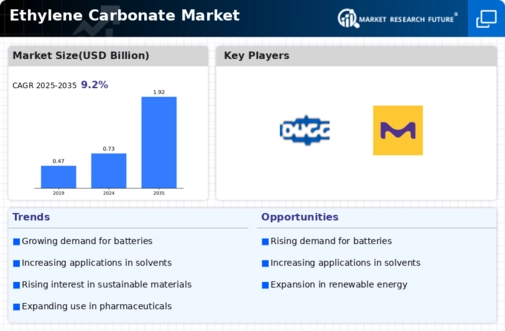

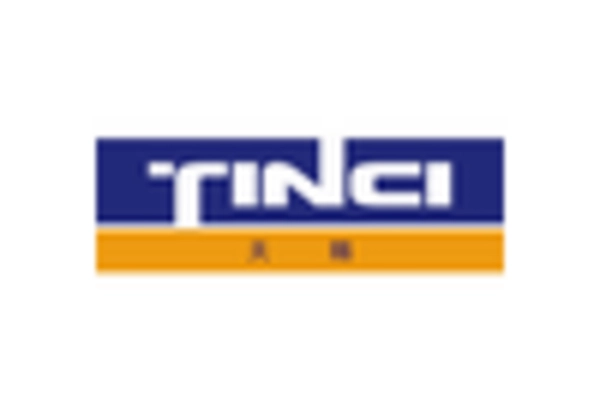
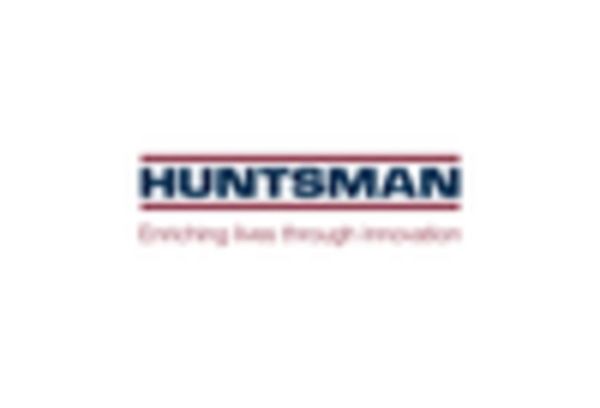
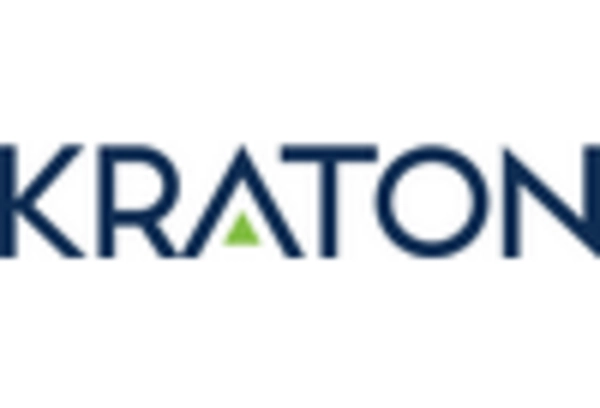
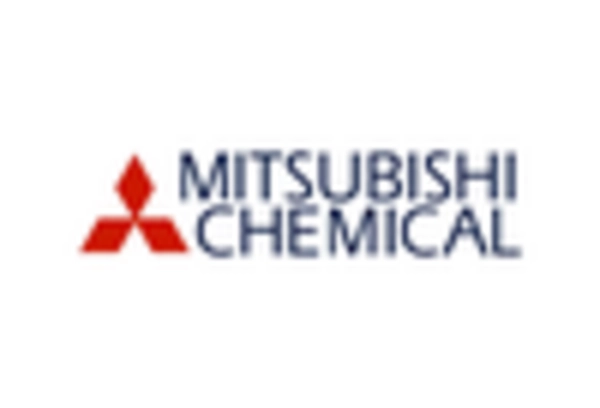
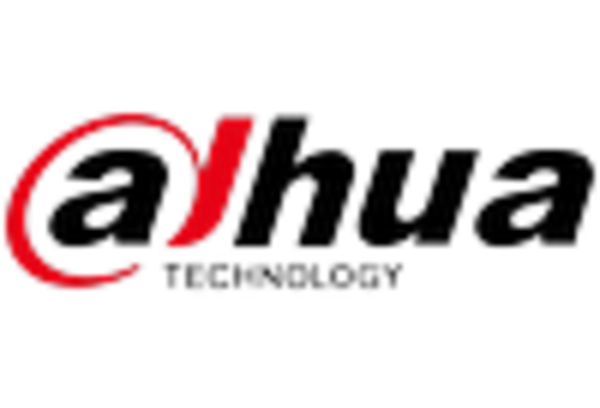









Leave a Comment